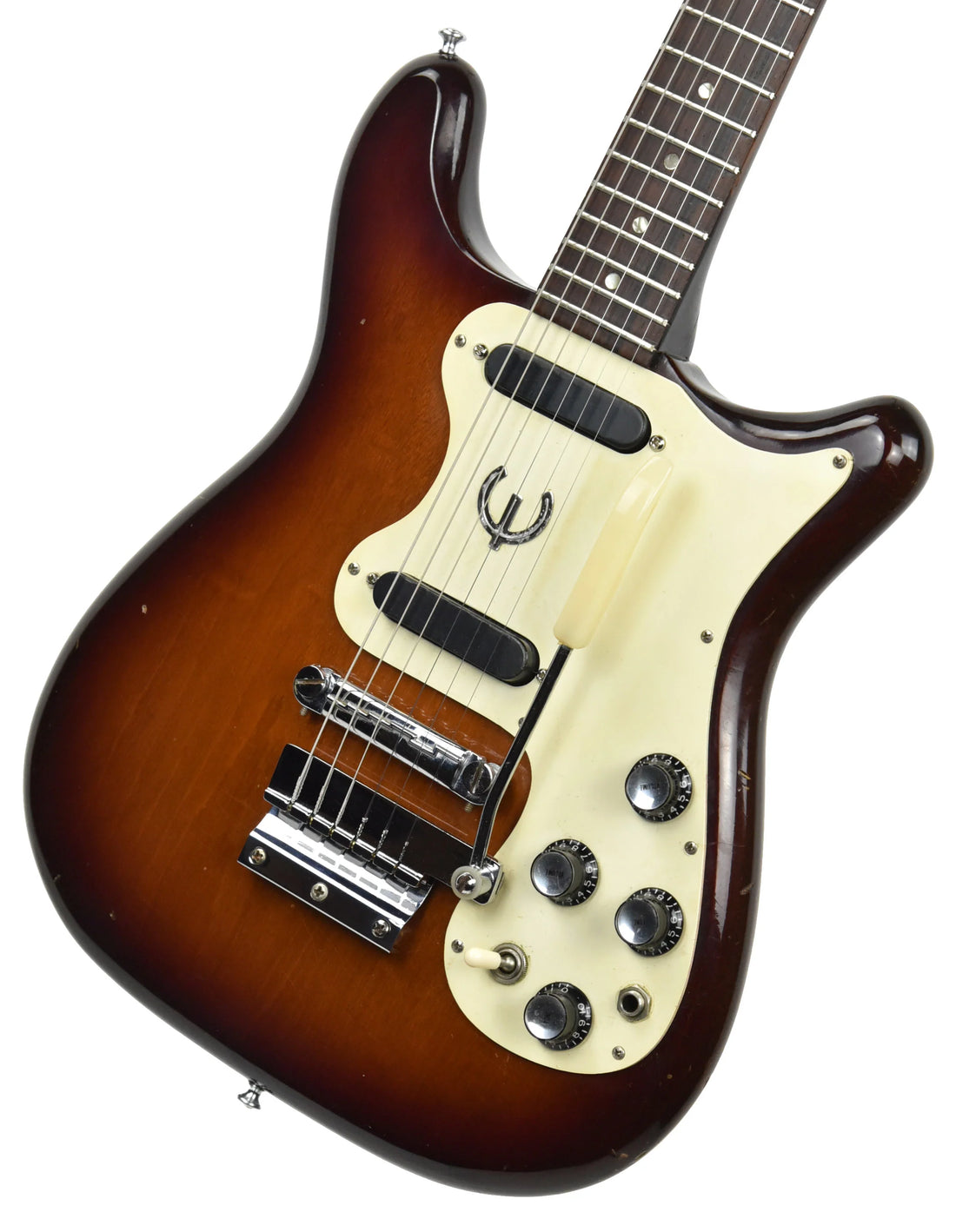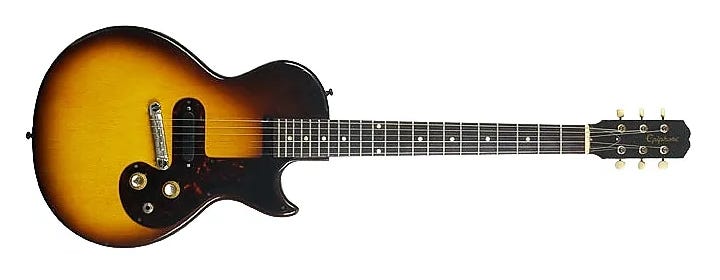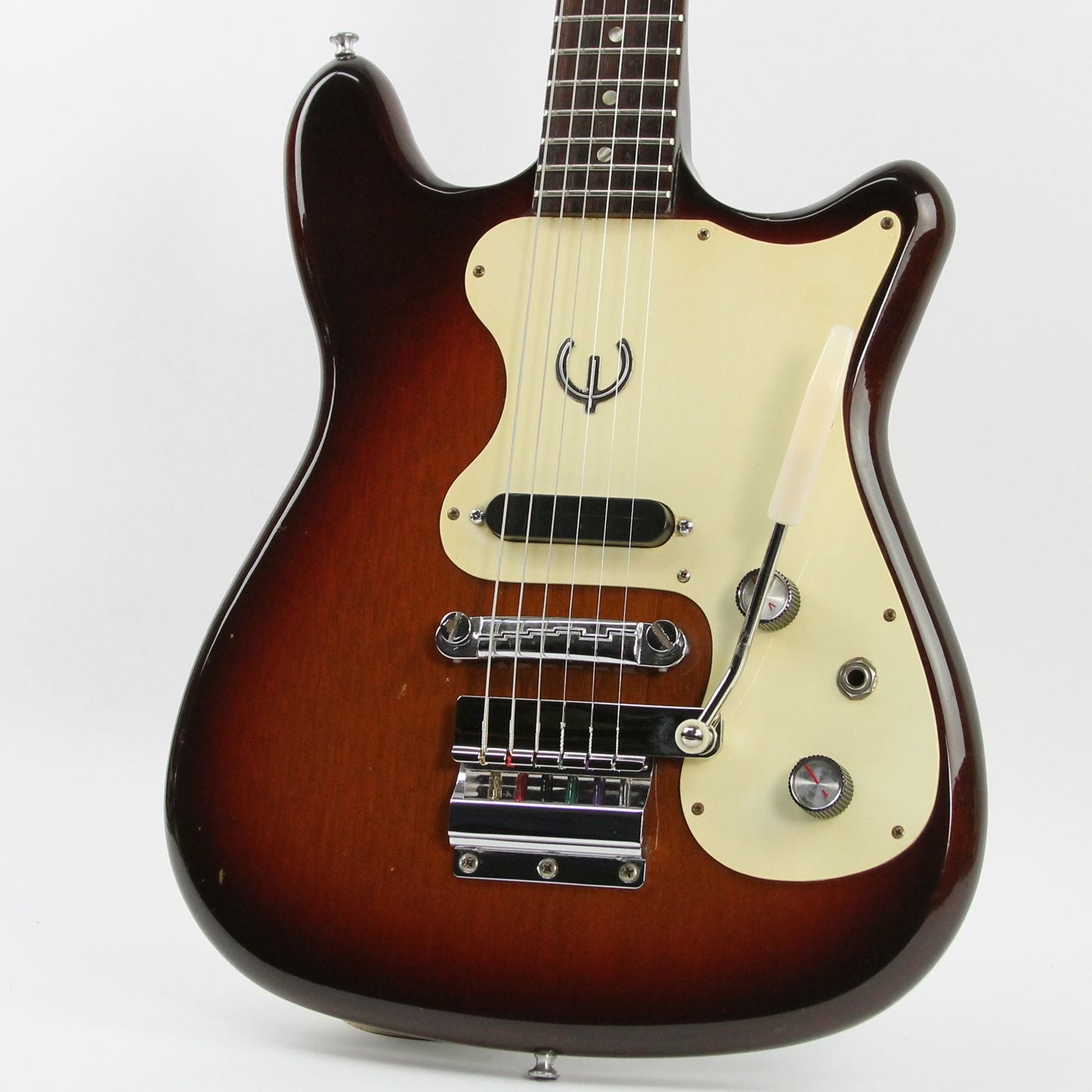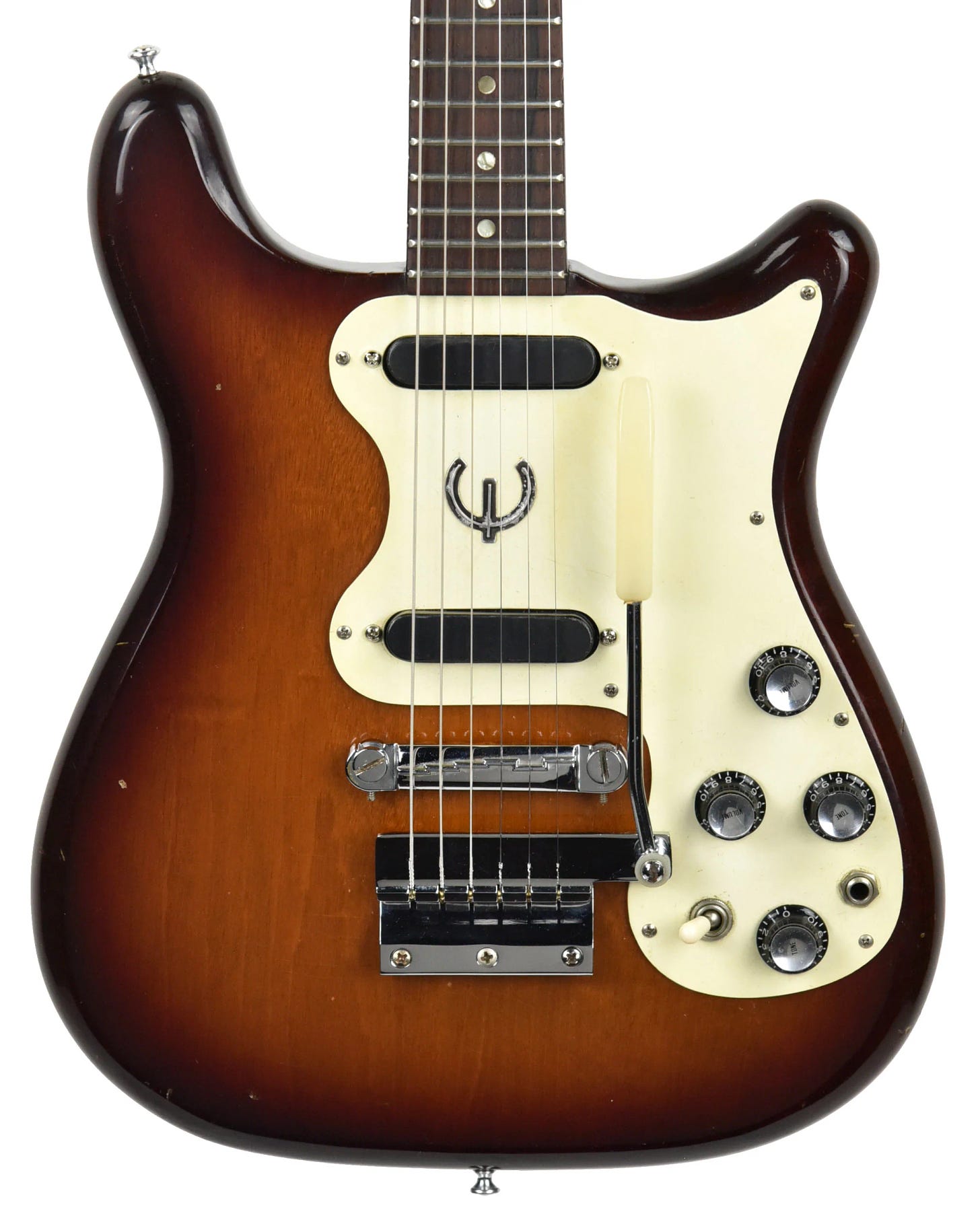Lick of The Week with Will Ray, founding member of The Hellecasters
Full disclosure, this is not a lick, but a little tutorial on Will’s Epiphone Olympic followed by… “Let’s see what she can do.” And you definitely want to see what she can do (4:20).
The Epiphone Olympic was introduced in 1960 and experienced four body style changes and several name variations.
At its core the original iteration is a Gibson Melody Maker with a different headstock. The Olympic and Melody Maker were both built in Kalamazoo using the same materials of a slab mahogany body/neck and rosewood fretboard. They also shared the same price tag for a while and were single cutaway models like that of a Les Paul.
After barely two years, the Olympic changed to a (near) symmetrical double cutaway style in 1962, just like the Melody Maker did the year before.
That shape lasted only one year before the bass horn was slightly elongated in 1964 making the guitar more of a definitive asymmetrical body. Meanwhile the Melody Maker kept the symmetrical shape which remained constant until 1966 before transitioning to a SG style.
Here’s where it gets confusing: In 1964 Epiphone kept the Olympic naming convention, but introduced a radically different body style. However, the body style wasn't new and first appeared in 1958 as the Coronet, Crestwood, and Wilshire (I'll give it the acronym CCW). The official designation of these Olympics beginning in 1964 is the "Olympic Single” and “Olympic Double” with the nomenclature referring to one or two pickups and they were more budget conscious versions of the CCW.
Upper fret access increased with each Olympic body change. On the single cut model the neck joined the body at the 12th fret, then the 16th fret with the symmetrical cutaway, the 18th fret on the asymmetrical cutaway, and finally the 21st fret on the CCW style Olympic.
Olympic Single
Olympic Double
But wait, there's more. The third Olympic shape (pictured below again as a reference) stayed in the line-up but the name was changed to "Olympic Special". To summarize and hopefully make it clear, beginning in 1964 there were three Olympic models- the Olympic Single, Olympic Double, and Olympic Special.
The guys over at Epiphone headquarters either had a terrific sense of humor or they were running around like chickens with their heads cut off. Other than some modern reissues, the Olympic torch petered out in 1970 when Epiphone production moved to Japan. Funny, the 1964 Summer Olympics were in Tokyo.
 1965 Epiphone Olympic Special
1965 Epiphone Olympic Special







2 comments
Thanks Pierre! Epiphone was trying to find their voice in the early 1960s under Gibson’s new ownership. It’s almost as if they were throwing darts… the poor marketing department.
Loving the Gavels. This one is particularly neat because it really points out the complications of marketing to different audiences with variances in the deign. Thank you.